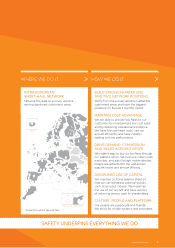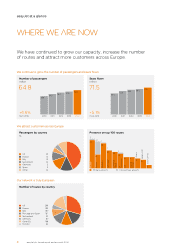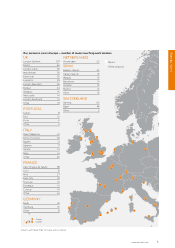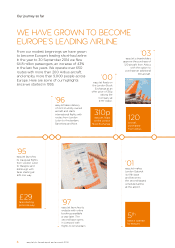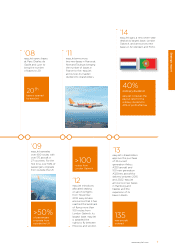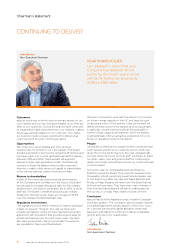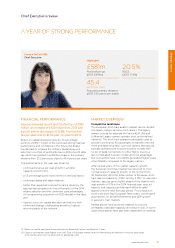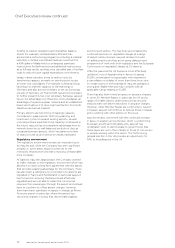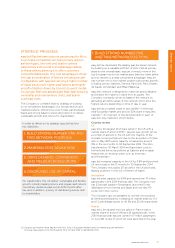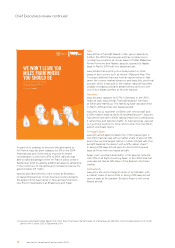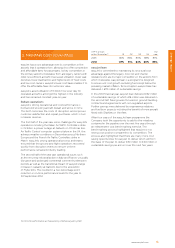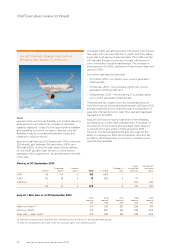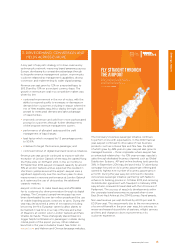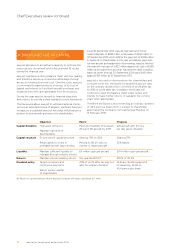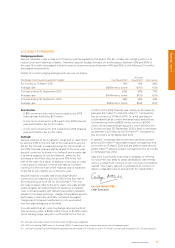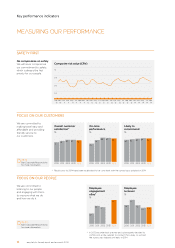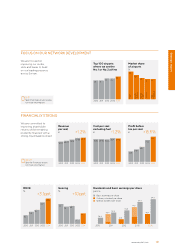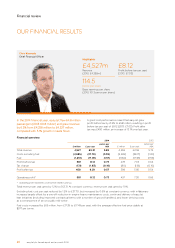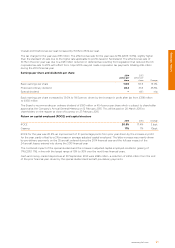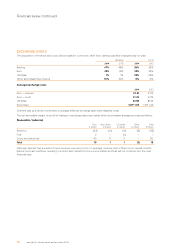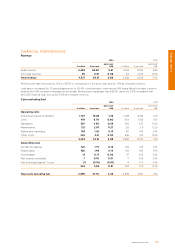EasyJet 2014 Annual Report Download - page 15
Download and view the complete annual report
Please find page 15 of the 2014 EasyJet annual report below. You can navigate through the pages in the report by either clicking on the pages listed below, or by using the keyword search tool below to find specific information within the annual report.
www.easyJet.com 13
Strategic report
easyJet has a cost advantage over its competitors in the
airports that it operates from, allowing it to offer competitive
and affordable fares for passengers. Its key competitors in
the primary airports it operates from are legacy carriers with
older, less efficient aircraft, lower asset utilisation, lower seat
densities, lower load factors and higher levels of fixed costs
and low-cost carriers. easyJet’s lower cost base enables it to
offer the affordable fares its customers value.
easyJet’s asset utilisation of 11 block hours per day for
operated aircraft is amongst the highest in the industry
and has remained constant year-on-year.
Robust operations
easyJet’s strong operational and cost performance is
built around ensuring aircraft depart and arrive on time.
This both minimises the costs of disruption, and improves
customer satisfaction and repeat purchases, which in turn
increases revenue.
The first half of the year saw some challenges for easyJet’s
operations including the Italian Air Traffic Controllers strike
in October, a power outage at Gatwick on Christmas Eve,
Air Traffic Control computer systems failure in the UK, the
adverse weather conditions in December across Northern
Europe and the French Air Traffic Controllers strike in
March. easyJet’s strong operational process and teams
ensured that the ground and flight operations recovered
quickly from disruption events to ensure on-time
performance remained industry leading.
The second half of the year saw operational issues such
as the recurring industrial action in Italy and France, unusually
disruptive and prolonged continental summer thunderstorm
periods as well as the transitional impact of easyJet’s large
increase in capacity at Gatwick due to the acquisition
of Flybe slots. This resulted in a two percentage point
reduction in on-time performance levels for the year to
30 September 2014.
OTP % arrivals
within 15 minutes(5) Q1 Q2 Q3 Q4
Full
year
2013 86% 86% 89% 88% 87%
2014 87% 91% 84% 80% 85%
easyJet lean
easyJet is committed to maintaining its structural cost
advantage against the legacy, low-cost and charter
operators who are its major competitors in the airports from
which it operates. easyJet lean is a programme designed
to ensure unit cost growth excluding fuel is kept below the
prevailing market inflation. Since inception easyJet lean has
delivered c.£175 million of sustainable savings.
In the 2014 financial year easyJet lean delivered £32 million
of sustainable savings, of which £18 million was delivered in
the second half. Savings were focused on ground handling
contracts and agreements with non-regulated airports.
Further savings were delivered by engineering initiatives
and fuel burn projects including the benefit of more aircraft
fitted with Sharklets in the fleet.
After four years of the easyJet lean programme the
Company took the opportunity to add to the initiatives
contained in the pipeline over the next five years through
an independent cost benchmarking exercise. The
benchmarking process highlighted that easyJet is in a
strong cost position compared to its competitors. The
process also highlighted that there are many more cost
saving opportunities for easyJet to deliver which will form
the basis of the plan to deliver £30 million to £40 million in
sustainable savings per annum over the next five years.
2. MAINTAIN COST ADVANTAGE
(5) On-time performance as measured by internal easyJet system.


